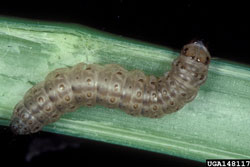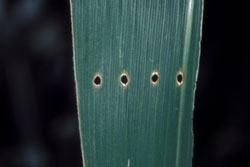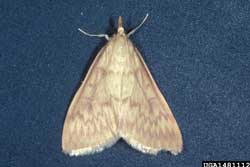European Corn Borer—Ostrinia nubilalis
European corn borer is an economic pest on a wide variety of field and vegetable crops including corn (field, sweet, & popcorn), snap beans, peppers, potatoes, and tomatoes. Damage is primarily due to borer tunneling in leaf midribs and the stalk. The second generation in August and September is a greater threat to late-planted corn. Borers of this generation tunnel in ears, ear shanks and stalks. Stalk breakage may be serious. Borer entrance holes in corn plants also provide a site for stalk rot pathogens to enter the plant.
Click on images to view full-size
Identification and Control Information
- Maine Potato IPM Program: European Corn Borer (PDF)—University of Maine Cooperative Extension
- Fact Sheet: European Corn Borer (PDF)—University of New Hampshire Cooperative Extension
- Entomology Fact Sheet: European Corn Borer (PDF)—Virginia Cooperative Extension
[Photos: Frank Peairs, Colorado State University, Bugwood.org]


